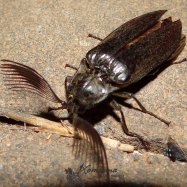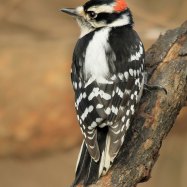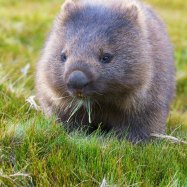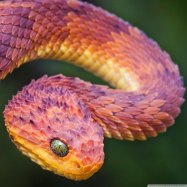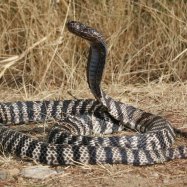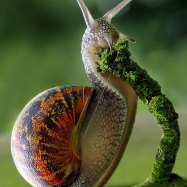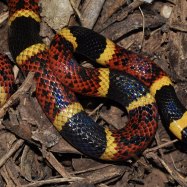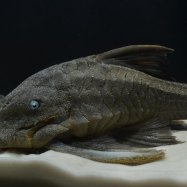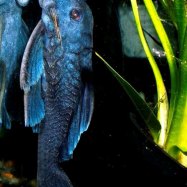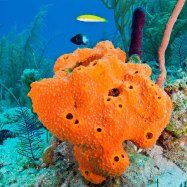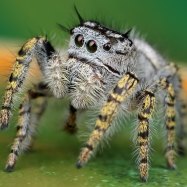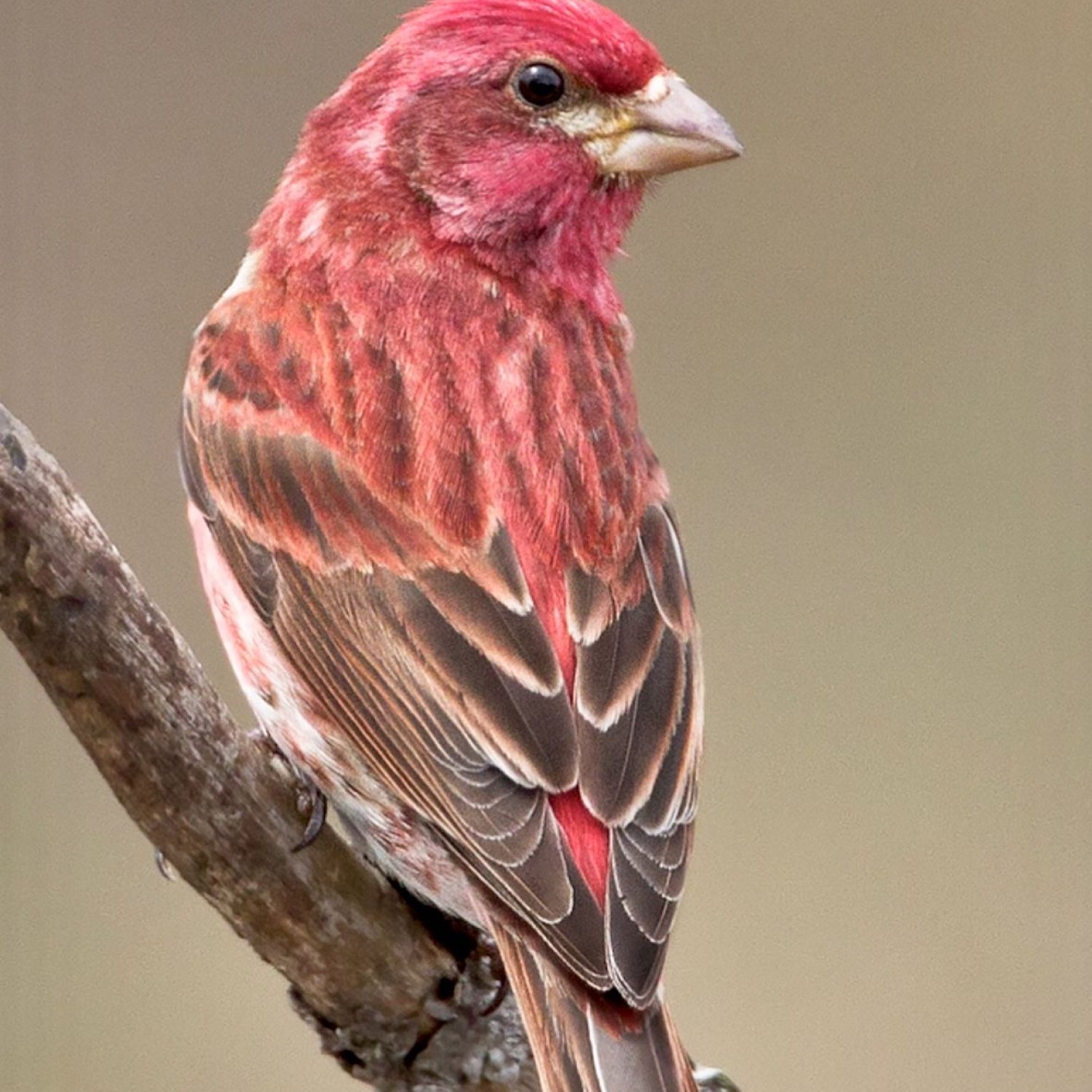
Purple Finch
12-15 centimeters
The Purple Finch, also known as the Carpodacus Purpureus, is a small to medium-sized bird with a plump body and a short, thick beak. They can be found in the Eastern and Western regions of North America and belong to the Fringillidae family. These beautiful birds average 12-15 centimeters in length and are known for their striking purple coloring. Keep an eye out for these feathered friends in your backyard! #purplefinch #northamericanbirds
Animal Details Summary:
Common Name: Purple Finch
Kingdom: Animalia
Habitat: Deciduous and mixed forests, coniferous forests, and shrublands
The Vibrant Purple Finch: A Delight to Observe in North America
The beauty of nature can often be found in the most unexpected places. Take, for example, the Purple Finch – a seemingly nondescript bird that inhabits the eastern and western regions of North America. But don't be fooled by its unassuming appearance, because this little bird is a true gem of the avian world.Scientifically known as Haemorhous purpureus, the Purple Finch belongs to the kingdom Animalia, phylum Chordata, and class Aves Purple Finch. It is a member of the order Passeriformes, which consists of over half of all known bird species, and the family Fringillidae, which includes over 100 species of finches, grosbeaks, and sparrows.
Habitat plays a crucial role in the life of the Purple Finch. It can be found in various environments, including deciduous and mixed forests, coniferous forests, and shrublands. This adaptability allows the bird to thrive in a wide range of locations, making it a common sight in many parts of North America.
But where does this stunning species originate from? The Purple Finch is native to the United States and Canada, with the majority of its population residing in these two countries. However, its geographical distribution extends beyond these borders, with sightings reported in Mexico and several Central American countries as well.
One look at a Purple Finch, and it's easy to understand why its name includes the word "purple." The males of this species are mostly red in color, with a striking rose-red head, back, and rump. This vivid coloration is a result of the pigments in their diet, primarily carotenoids found in fruits, seeds, and insects Parrotfish.
On the other hand, the females of the species are considerably different from their male counterparts. They have a brownish hue with heavy streaking on their body, making them less conspicuous in their surroundings. This coloring serves as a form of camouflage to protect them from predators.
Aside from their vibrant plumage, the Purple Finch's body shape is also worth noting. It is a small to medium-sized bird with a plump body and a short, thick beak. These physical features are adapted for its omnivorous diet, allowing it to consume various food sources efficiently.
In terms of size, the Purple Finch measures between 12-15 centimeters in length. This makes it slightly larger than a sparrow but smaller than a junco. Its size makes it easy to spot among the branches of trees and shrubs, making it a delight for birdwatchers.
When it comes to feeding methods, the Purple Finch is classified as an omnivore. This means that it consumes a diverse diet consisting of both plant and animal sources. Its diet primarily consists of seeds, insects, and fruits, making it an essential species for pollination and seed dispersal in its habitat.
Due to its vibrant plumage and widespread presence, the Purple Finch has gained popularity among bird enthusiasts and hobbyists. But observing these birds in their natural habitat goes beyond aesthetics. It allows us to learn more about their behavior, social interactions, and adaptability.
A close look at the Purple Finch's behavior reveals interesting patterns. They are often seen in pairs or small groups, foraging for food among tree branches and shrubs. They are also highly vocal, with males producing a distinct song to attract mates and establish territory.
Another fascinating aspect of the Purple Finch is its ability to perform unique displays during courtship. The male will swoop and dive in front of the female, fluttering its wings and puffing out its vibrant feathers, creating an impressive spectacle to behold.
But the beauty and charm of the Purple Finch go beyond its appearance and behavior. It also plays a vital role in its ecosystem. As an omnivore, it helps in regulating insect populations, and its consumption of fruits and seeds aids in plant reproduction. Its habitat is also essential for maintaining the biodiversity of its environment.
Sadly, the Purple Finch has faced some threats to its population in recent years. Habitat loss due to deforestation and urbanization has led to a decline in its numbers. In addition, the use of pesticides and herbicides in agriculture also poses a risk to its survival.
Fortunately, efforts are being made to protect this species, such as creating protected areas for its habitat and educating the public about the importance of conservation. In some areas, the Purple Finch's presence has also been used as an indicator of a healthy ecosystem, emphasizing the need to preserve its environment.
In conclusion, the Purple Finch may seem like just another bird in the vast wilderness of North America, but its beauty, behavior, and role in its habitat make it a truly remarkable species. Its adaptability, vibrant coloration, and unique behaviors make it a joy to observe and a valuable member of its ecosystem. It is our responsibility to ensure that this stunning bird continues to thrive and enrich the natural world around us.

Purple Finch
Animal Details Purple Finch - Scientific Name: Haemorhous purpureus
- Category: Animals P
- Scientific Name: Haemorhous purpureus
- Common Name: Purple Finch
- Kingdom: Animalia
- Phylum: Chordata
- Class: Aves
- Order: Passeriformes
- Family: Fringillidae
- Habitat: Deciduous and mixed forests, coniferous forests, and shrublands
- Feeding Method: Omnivorous
- Geographical Distribution: North America
- Country of Origin: United States and Canada
- Location: Eastern and western regions of North America
- Animal Coloration: Males are mostly red in color with a rose-red head, back, and rump, while females are brownish with heavy streaking
- Body Shape: Small to medium-sized bird with a plump body and a short, thick beak
- Length: 12-15 centimeters
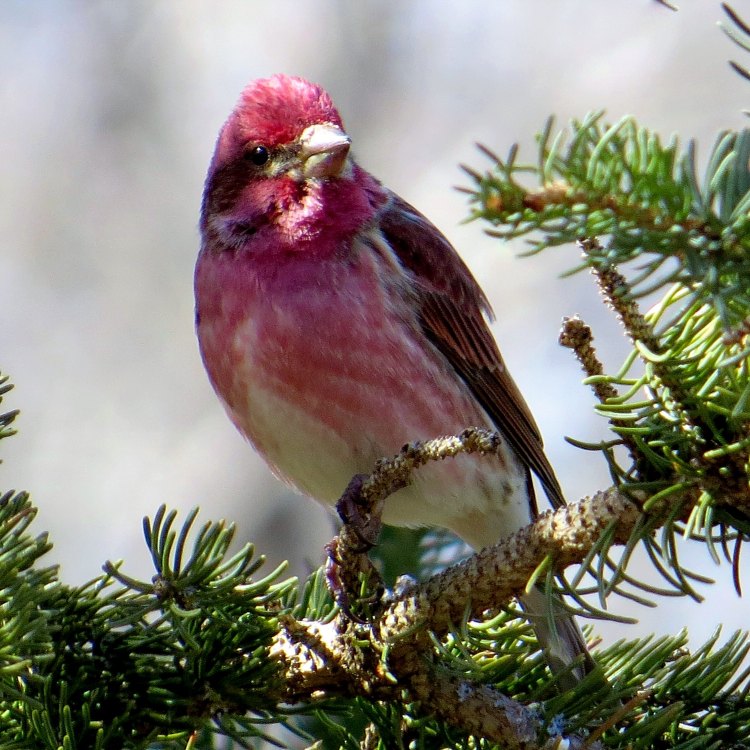
Purple Finch
- Adult Size: Small to medium-sized
- Average Lifespan: 5-7 years
- Reproduction: Sexual
- Reproductive Behavior: Monogamous
- Sound or Call: Varied melodious songs
- Migration Pattern: Most populations are migratory
- Social Groups: They are gregarious and form small flocks outside of the breeding season
- Behavior: Active and agile foragers
- Threats: Habitat loss and fragmentation
- Conservation Status: Least Concern
- Impact on Ecosystem: They feed on insects and seeds, and also serve as prey for other animals
- Human Use: They are popular among birdwatchers and are sometimes kept as pets
- Distinctive Features: Males have a bright red coloration
- Interesting Facts: Purple Finches were once kept as cage birds in Europe during the 18th and 19th centuries
- Predator: Birds of prey and mammals
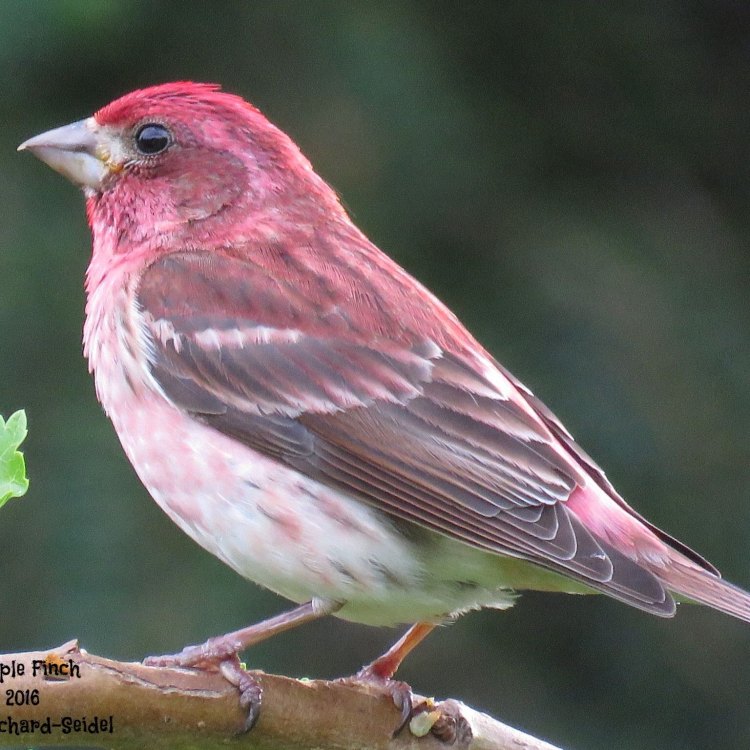
Haemorhous purpureus
The Fascinating Purple Finch: A Small but Mighty Species
The world of birds is filled with a diverse array of species, each with its own unique set of characteristics and behaviors. Among these feathered creatures is a small, but mighty, bird known as the Purple Finch.Measuring only 5 to 6 inches in length, the Purple Finch is considered a small to medium-sized bird. However, don't let its size fool you – this bird possesses a powerful set of features that make it a valuable member of the ecosystem PeaceOfAnimals.Com. In this article, we'll take a closer look at the Purple Finch and explore its distinctive features, behaviors, and impact on the world around us.
The Physical Appearance of a Purple Finch
The first thing that comes to mind when we think of the Purple Finch is, well, purple. And rightly so – the male Purple Finch is famous for its vibrant red coloration, making it a visually striking bird to behold. However, the female Purple Finch is not as brightly colored as the male, with a muted gray-brown appearance.Apart from their distinctive coloration, Purple Finches also have a stout and conical-shaped beak, which is perfect for cracking open seeds. They also have short but strong legs, enabling them to move swiftly and efficiently on the ground and in trees.
The Reproductive and Social Behavior of Purple Finches
Purple Finches have a sexual mode of reproduction, meaning both male and female birds are involved in the process of creating offspring. However, what sets them apart from other bird species is their monogamous behavior. This means that they form a pair with a single mate and remain together throughout the breeding season Peagle. In some cases, these pairings can last for multiple breeding seasons.During the mating season, male Purple Finches showcase their vibrant red plumage to attract potential mates. Once a pair is formed, they work together to build a nest, usually in a coniferous tree. The female lays an average of 3 to 5 eggs, which are incubated by both parents for about two weeks. After hatching, the young birds are fed and cared for by both parents until they are ready to leave the nest.
The Sounds and Calls of Purple Finches
Another defining characteristic of the Purple Finch is its varied and melodious songs and calls. These birds are known for their complex and beautiful songs, which they use to communicate with their mates and defend their territories.Male Purple Finches sing the most elaborate songs, especially during the breeding season. These songs are often a mixture of quick and short notes that are repeated over and over. On the other hand, females tend to produce shorter and simpler songs.
Apart from songs, Purple Finches also have a variety of calls, including a soft, mellow "puck" call, a cheery and upbeat "plip" call, and a nasal "raeee" call.
Migration and Social Groups of Purple Finches
Most populations of Purple Finches are migratory, meaning they move from one place to another in search of food and breeding grounds. During the breeding season, which typically lasts from April to August, these birds can be found in the northern parts of the United States and southern parts of Canada. However, during the winter months, they migrate south to Florida, Mexico, and Central America.Outside of the breeding season, Purple Finches are gregarious and form small flocks with other members of their species. These flocks can consist of 10 to 30 birds and can be seen foraging together for food. This social behavior not only helps the birds find food more efficiently, but also provides protection from predators.
The Behavior and Habitat of Purple Finches
Purple Finches are active and agile foragers, meaning they are constantly on the move in search of food. Their preferred habitats include coniferous and mixed forests, as well as open areas with shrubs and trees. They are also commonly found in backyard feeders, especially during the winter months.As for their diet, Purple Finches primarily feed on insects and seeds. They use their stout beaks to crack open the shells of various seeds, including sunflower, millet, and thistle seeds. This makes them valuable seed dispersers, which helps maintain the health and diversity of plant species in their habitats.
The Threats and Conservation Status of Purple Finches
Unfortunately, like many other bird species, Purple Finches face numerous threats in their natural habitats. One of the main threats is habitat loss and fragmentation due to human activities such as deforestation and urbanization. This can disrupt their breeding and foraging habitats, making it more difficult for them to survive.Despite these threats, the International Union for Conservation of Nature (IUCN) has listed the Purple Finch as a species of "Least Concern" on the conservation status scale. This is due to their widespread distribution and large population numbers. However, it is still important to be mindful of our actions and protect their habitats to ensure the continued survival of this species.
The Impact of Purple Finches on the Ecosystem
As mentioned earlier, Purple Finches feed on insects and seeds, making them an important part of the food chain in their habitats. This means that they directly impact the population of insects and plants in their surroundings.Furthermore, Purple Finches also serve as prey for other animals such as small mammals and birds of prey. This not only helps maintain balance in the ecosystem but also provides food for other species.
The Human Use and Interest in Purple Finches
Apart from being an important part of the ecosystem, Purple Finches also hold a special place in the hearts of many birdwatchers and nature enthusiasts. These beautiful birds are often sought after for their vibrant colors and complex songs, making them a popular subject for birdwatchers and photographers.In the past, Purple Finches were even kept as pets in Europe during the 18th and 19th centuries. However, this practice has since been discontinued, and these birds are now admired in the wild.
In Conclusion
The Purple Finch may be small in size, but its impact on the ecosystem and the fascination it evokes in people make it a valuable and unique species. From its vibrant red coloration and melodic songs to its active foraging behavior and vital role in the food chain, there is no denying that this bird is a force to be reckoned with in the world of birds. Let us continue to appreciate and protect this magnificent species for years to come.
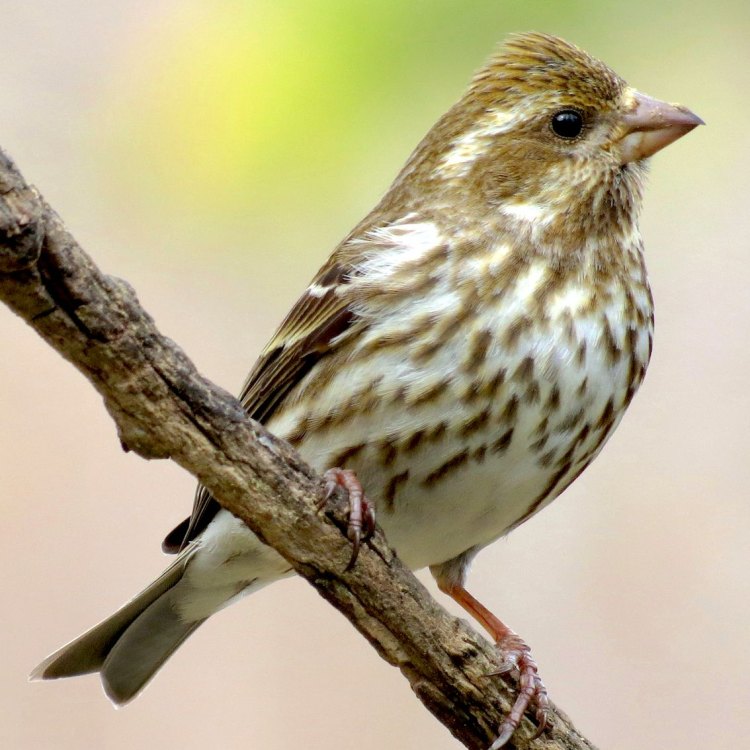
The Vibrant Purple Finch: A Delight to Observe in North America
Disclaimer: The content provided is for informational purposes only. We cannot guarantee the accuracy of the information on this page 100%. All information provided here may change without prior notice.

